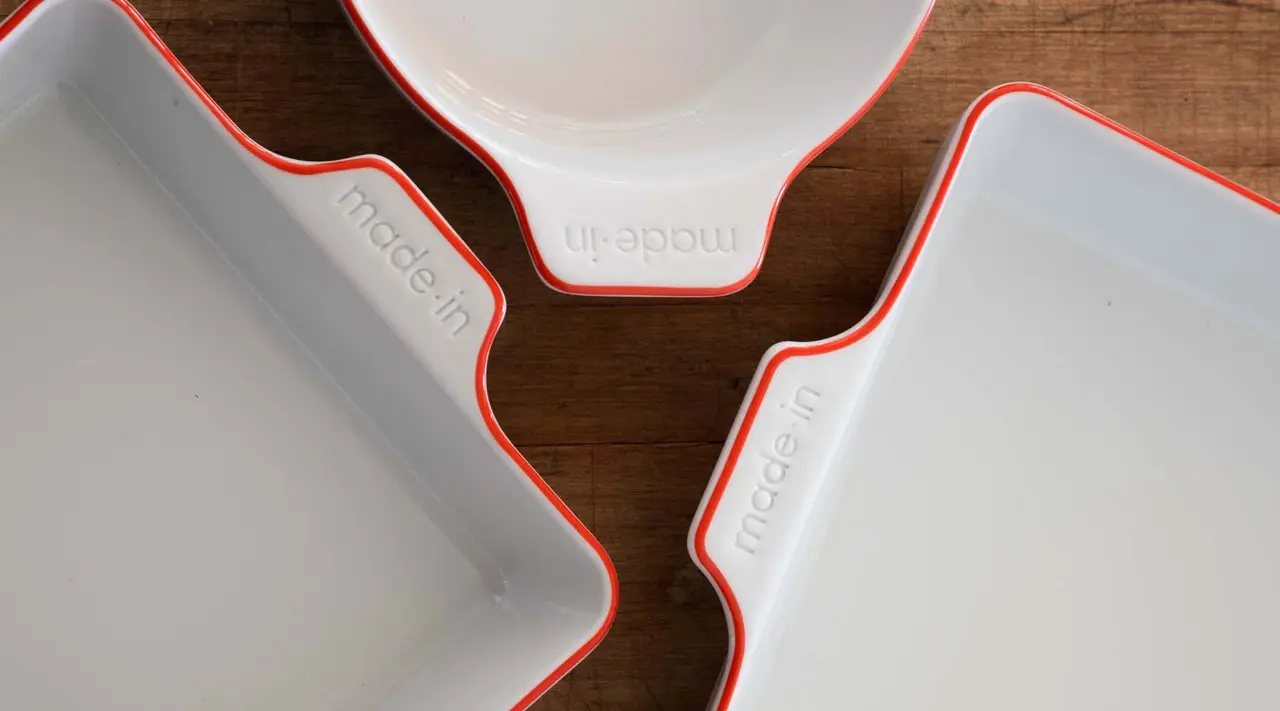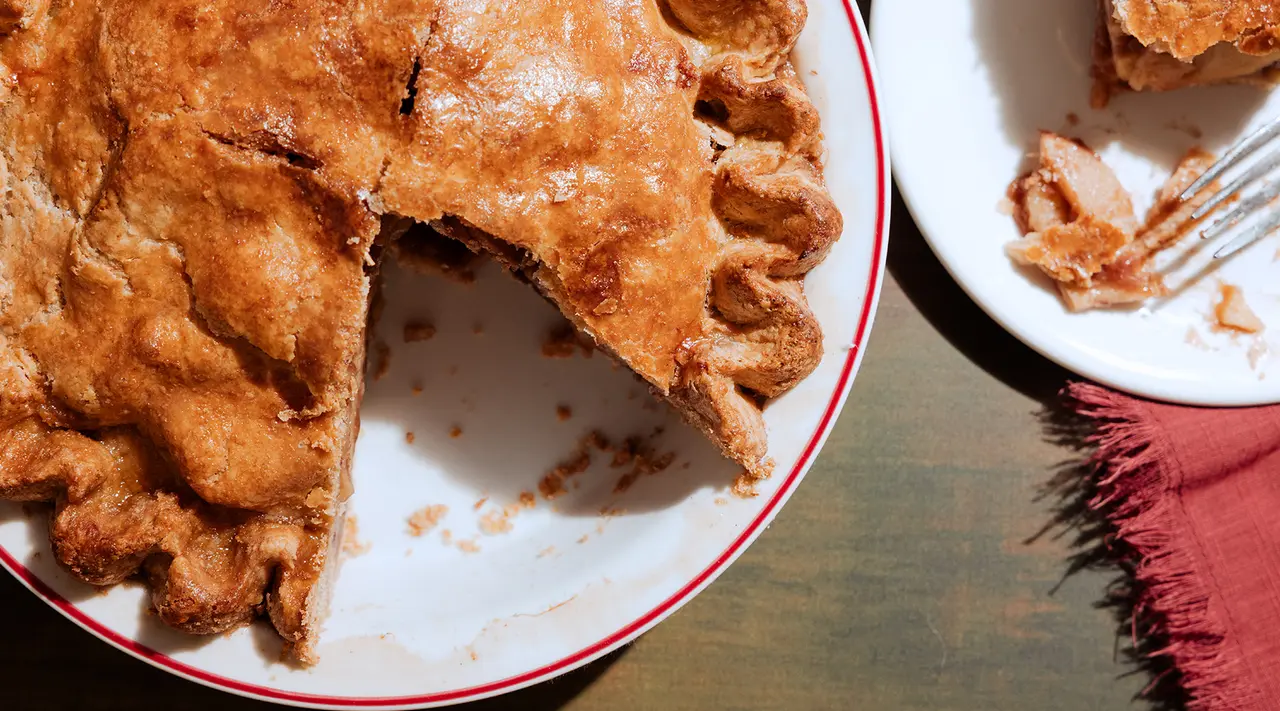We often don’t think about the exact materials in our everyday kitchen items. Things like plates, mixing bowls, pie plates, and casserole dishes are often made of some type of ceramic, but what’s the difference? They’re all made of clay that’s hardened in a kiln, but the make-up of the clay and temperatures that they’re fired at make the most significant difference in their performance. Two of the most common are stoneware and porcelain.
Porcelain is probably best known for tea sets and decorative statues, but did you know it’s actually an incredibly durable material for bakeware? Not just for your grandmother’s company china, porcelain is a surprising powerhouse for kitchenware. On the other hand, stoneware has a rustic aesthetic and is known for its incredible versatility. Here’s how they stack up against each other.
Understanding Stoneware
When you think of ceramics, the image that pops into your head is probably stoneware. It’s the most common type of ceramic and encompasses mugs, bowls, plates, casserole dishes, and more. Stoneware is fired at a lower temperature than porcelain, and is made up of refined clay with several types of coarse additives.
Advantages of Stoneware
Stoneware is one of the most common types of dinnerware and bakeware for a reason— it’s durable, affordable, and easy to make. Here are some additional reasons it’s a popular choice in home kitchens.
Durability
Stoneware is one of the oldest forms of dinnerware and bakeware. Most vintage or ancient plateware that survived until today is usually stoneware. The added moisture and inherent elasticity of the clay allows stoneware to withstand more wear and tear.
Cost-Efficient and Affordable
Stoneware is one of the most common materials you see for dinnerware and bakeware. The clay and additives are easy and cheap to source, plus stoneware requires less intense firing which makes it a more affordable choice.
High Heat Threshold
Stoneware holds heat exceptionally well and heats up quickly. When it comes to baking, this means that stoneware yields extremely browned bottoms, crispy edges, and thoroughly cooked middles.
Considerations of Stoneware
While stoneware is a great choice for some applications, it’s not always the best choice because it can be hard to clean, absorbent, and scratch other surfaces. Here are some factors to consider before opting for this material.
Coarse Texture
Stoneware has a coarser grain than porcelain. This gives it a more unrefined and rough and ready look which might look nice for, say, a pot for a house plant, but isn’t ideal for bakeware. Sponges,rags, and bits of food can get caught in these pores, so stoneware can be difficult to clean.
Absorbent Material
A characteristic that distinguishes different types of clay, like the kinds used to make stoneware or porcelain, is its porousness. By definition, stoneware absorbs more moisture than porcelain due to the additions to the clay and firing temperatures. This moisture absorbency leads to a softer finished product that can hold bacteria.
Rough Bottom
Stoneware often has a rustic look and finish, which is appealing to some but usually has a rough bottom. Glaze can’t be applied to the bottom of each piece because it will fuse to the kiln, so the rough, coarse-grained clay is exposed and can scratch countertops, tables, or other dinnerware and bakeware.
Understanding Porcelain

Given its bright white color, it may be surprising to learn that porcelain is, in fact, a composite material. Made up of a kaolin clay base, with feldspar and quartz silica mixed in to reinforce it, this mixture is fired at around 2300F (while stoneware is fired at about 2100F).
The higher temperature allows the silt additives in the clay to meld together better and create a stronger material. The end product is a robust, hard piece of bakeware with a beautifully smooth, glossy finish.
Advantages of Porcelain
Porcelain is fired at a higher temperature than stoneware, leading to a harder and more durable composition that’s much less likely to break. Given its composition, the finer particles in porcelain clay make it much denser when fired, so less of it is needed to be strong.
Lightweight Build
Unlike stoneware, makers can pull porcelain thinner without compromising the integrity of the clay—meaning porcelain tends to be lighter and less cumbersome while still retaining its strength. Lighter porcelain bakeware is much easier to maneuver and lift in or out of the oven, no matter what's inside.
Smooth Texture
Porcelain is made with a type of clay that has a much finer grain than the clay used for stoneware. This means that once it’s fired, porcelain has a smoother texture that’s both easier to clean and has a more visually appealing and non stick finish. Porcelain is often considered a more high-quality material than its counterparts, since it’s so polished and smooth while maintaining durability.
Thermal-Shock Resistant
Nothing is worse than the heartbreak of shattered bakeware. Unlike many other types of materials, porcelain is thermal-shock resistant so it can handle all types of temperature fluctuations without cracking or breaking, since the heat is distributed exceptionally evenly across the material with no hotter zones or spots of the bakeware.
Considerations of Porcelain
Porcelain is a hard, durable material, but it can be more expensive than other options and can be susceptible to chipping. Here are some considerations to keep in mind when shopping for or using porcelain.
Susceptible to Chipping
Porcelain's biggest advantage is its extreme hardness. But the trade-off of extra hard materials is a lack of tensile strength, meaning it’s not so great at handling a shock like being put down hard on a counter or bumping into a hard corner. This can often result in chipped corners or bottoms.
Price
Often, porcelain is pulled into ultra-thin designs and can be manipulated into many elaborate shapes with ornate decorations or delicate patterns, leading to a higher upfront price than ceramic or stoneware.
Varied Construction
Unfortunately, lower-quality "porcelain" cuts corners during the construction process, and is often coated in enamel or non stick coating to compensate for its below-par craftsmanship (as this is cheaper than making porcelain the right way to strengthen it). This often leads to easier cracking, chipping, or breaking.
Luckily, our Porcelain is made using a more than 200 year-old French recipe that yields a naturally non stick exterior and incredibly strong interior—no need to add anything extra to our durable porcelain.
Is Porcelain or Stoneware Better?

While stoneware may be great for a decorative fruit bowl or souvenir mug, porcelain is the way to go for bakeware. The best bakeware should be durable, able to perform in the high heat of the oven, and make for a beautiful serving piece—making porcelain the only choice.
Ready to Shop?
Now that you know porcelain is the preferred choice over stoneware when it comes to Bakeware, it’s time to outfit your kitchen in this durable, versatile material.
Luckily, our extensive line of porcelain Bakeware is here to suit any need or color preference, from 9x13 Baking Dishes for the perfect peach cobbler to Oval Gratin Dishes for savory dishes like mushroom lasagna. All you need to decide is what color and shape (or shapes) you’ll be using for years to come.
























